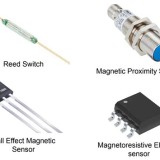How Much Do Farmers Get for Having Wind Turbines on Their Land?
As the world transitions to renewable energy sources, wind energy has become increasingly popular. Wind turbines are often installed on farmland, providing farmers with an additional source of income. However, many people wonder how much farmers actually get for having wind turbines on their land.
Factors Affecting Payments
The amount of money farmers receive for wind turbines on their land varies depending on several factors, including:
- Land area: The larger the area of land leased to the wind farm developer, the higher the lease payments.
- Turbine size: Larger turbines generate more electricity and typically command higher lease rates.
- Wind conditions: Farms with stronger and more consistent wind speeds can generate more electricity, resulting in higher payments.
- Lease agreement: The specific terms of the lease agreement, including the duration of the lease and the calculation of payments, can impact the overall amount received.
Average Payments
According to the American Farm Bureau Federation, the average annual lease payment for a single wind turbine is around $5,000 to $10,000. However, payments can range from as low as $1,000 to as high as $15,000 or more, depending on the factors mentioned above.
In addition to lease payments, farmers may also receive additional benefits from hosting wind turbines, such as:
- Reduced property taxes: Some states offer tax breaks to farmers who host wind turbines.
- Improved infrastructure: Wind farm developers often upgrade roads and electrical infrastructure on the farm, which can benefit the farmer and the community.
- Environmental stewardship: Wind turbines generate clean, renewable energy, contributing to the farmer's sustainability efforts.
Negotiating a Lease
Farmers considering leasing their land for wind turbines should carefully negotiate the lease agreement. Some important considerations include:
- Duration of lease: The length of the lease should be reasonable and reflect the farmer's long-term plans.
- Payment terms: Ensure that the lease includes details about payment schedule, escalation clauses, and any additional benefits.
- Access to land: The farmer should negotiate access to their land for maintenance, farming operations, and recreational activities.
- Decommissioning: The lease should specify who will be responsible for decommissioning the turbines at the end of their lifespan.
Conclusion
Having wind turbines on their land can provide farmers with an additional source of income and other benefits. However, the amount of payment they receive depends on various factors. By understanding the average payments, considering the benefits, and negotiating a fair lease agreement, farmers can maximize the value of their land while contributing to the transition to clean energy.

Wind Energy Can Help American Farmers Earn Money Avoid Bankruptcy
Wind Energy Farm With The

How Much Money Does A Farmer Make For Wind Turbine Sciencing

Increase Your Farm Profits With Wind Energy Autotrader

Energy On The Farm Resource

For Ohio Farmers Wind Turbine Revenue Helps Take The Sting Out Of A Bad Year Energy News Network

How Much Money Does A Farmer Make For Wind Turbine Sciencing

How Much Money Does A Farmer Make For Wind Turbine Sciencing

Wind Power Turbine Lease Explained Ldc Infrastructure
Farmers Skeptical Of Wind Turbines But More Accepting Certain Proposals U A Study Shows Cbc News








